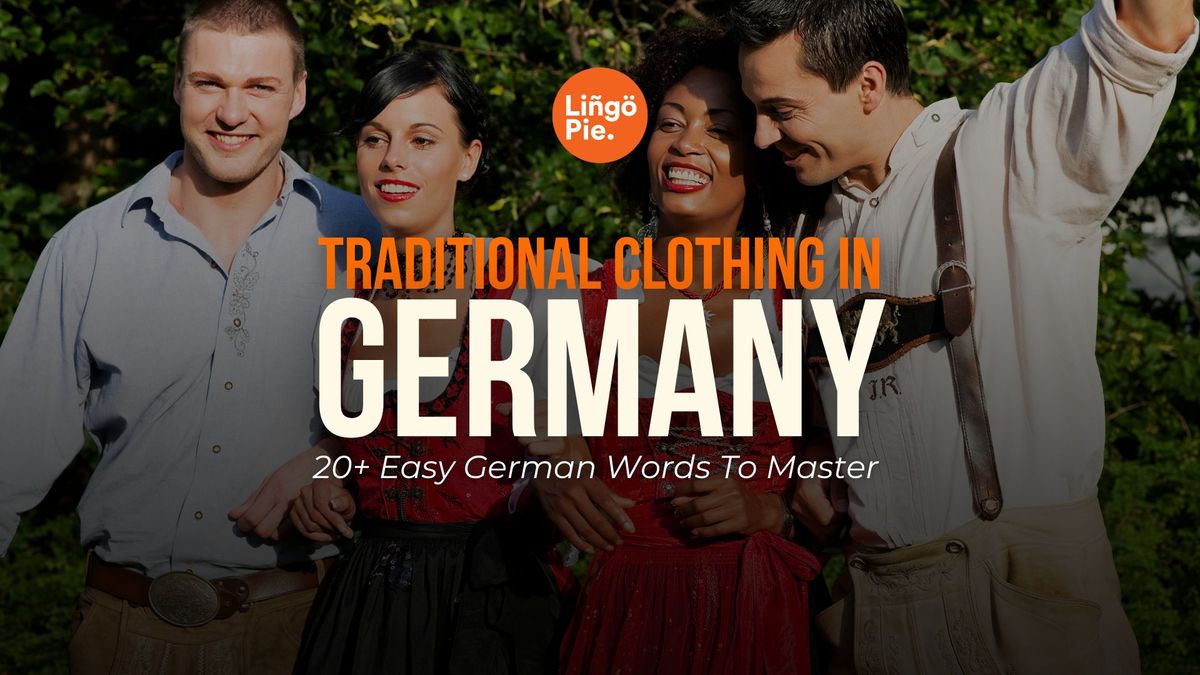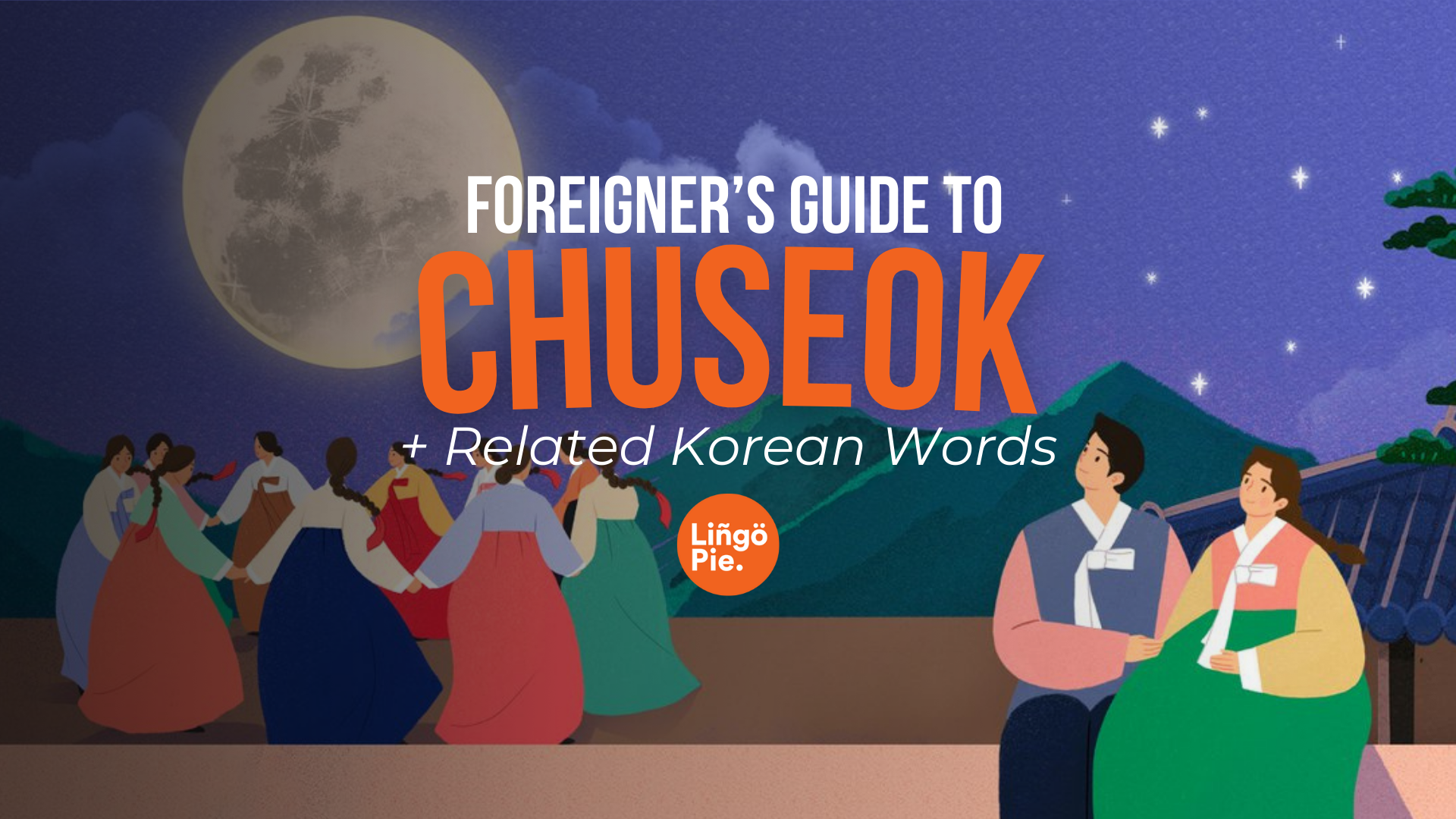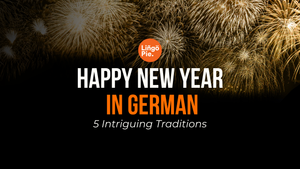Ever seen those German movies and German documentaries with scenes from Oktoberfest? You know, the ones with folks rocking leather shorts and fancy dresses? That's traditional German clothing, or "Tracht" as they say in German. And let me tell you, it's way cooler than just festival wear!
It was in 2023 when the teacher in my German class started chatting about Lederhosen and Dirndls. I'm thinking, "Wait, what? How's this gonna help me order a coffee in Berlin?" But by the end of our session, it all clicked.
Why? Well, knowing about this topic is super helpful if you want to go on a trip to Germany, learn German, or be immersed in German culture. It's even a great ice-breaker with German speakers!
So in this guide, we'll break down everything you need to know about traditional garments in Germany. We'll cover:
- What people wear in different parts of Germany
- Why these outfits are still a big deal today
- How to tell a real Dirndl from folk costumes
- Some key German words to drop into conversations and sound like a pro
Curious? Read on!

What is the traditional German clothing?
Traditional German clothing, known as "Tracht" (pronounced like "trahkt"), is a style of dress that represents German cultural heritage. It varies by region and includes outfits like the famous Lederhosen for men and Dirndl for women.
Tracht isn't just one outfit – it's a whole category of traditional clothes. Different areas in Germany have their own styles, kind of like how American cowboy boots are different from New York fashion.
To help you get comfortable talking about shopping or wearing Tracht, here are two example conversations you might have:
At a German festival
- You: "Ist das traditionelle deutsche Kleidung?" (Is that traditional German clothing?)
- German friend: "Ja, das ist eine Tracht aus Bayern." (Yes, that's a traditional outfit from Bavaria.)
In a clothing store
- You: "Ich suche eine Dirndl. Haben Sie welche?" (I'm looking for a Dirndl. Do you have any?)
- Salesperson: "Ja, wir haben verschiedene Dirndl. Möchten Sie ein traditionelles oder ein modernes?" (Yes, we have various Dirndls. Would you like a traditional one or a modern one?)

Back in the day, your Tracht could tell people a lot about you:
- Where you're from: Each region has its own style. Bavarian Tracht is probably the most famous, but there are tons of others.
- Your job: Certain details might show if you were a farmer, a craftsman, or something else.
- Your social status: Fancier materials and more elaborate designs often meant you were well-off.
- If you're single or married: Especially for women, how you wear your Tracht can signal if you're available!
Wealthier individuals wore more elaborate, colorful outfits with finer materials. Certain professions had specific dress codes; for instance, miners in the Erzgebirge region wore distinctive uniforms.
Today, while these distinctions are less rigid, the quality and intricacy of Trachten can still reflect the wearer's economic status. Also, it's still a big deal at festivals, weddings, and other special events. Why? Because wearing a trachten is a way for people to connect with their roots and show off their regional pride.
What are Dirndl and Lederhosen?
Dirndl and Lederhosen are the most famous types of traditional German clothing. A Dirndl is a women's dress outfit, while a Lederhosen is leather shorts worn by men, both originating from the Alpine regions of Germany and Austria.
To picture it better, simply think of these as:
- Traditional Dirndl (pronounced "DEERN-dul"): This is the outfit you've probably seen women wearing at Oktoberfest. It's like a dress with an apron, but way fancier.
- Traditional Lederhosen (pronounced "LAY-der-hoh-zen"): These are those leather shorts guys wear. The name literally means "leather pants" in German.

How do you wear a Dirndl properly?
A Dirndl isn't just a pretty dress - there's a whole art to wearing it right! Here are the basic components of this traditional clothing.
- Bluse (blouse): This is worn underneath and usually has puffy sleeves.
- Mieder (bodice): The tight-fitting top is traditionally worn over the blouse.
- Rock (skirt): Can be different lengths, from knee to ankle.
- Schürze (apron): The final touch that ties it all together - literally!
Remember, "Ich trage ein Dirndl" means "I'm wearing a Dirndl." Practice saying it - you might need it at Oktoberfest!
Oh and before I forget, did you know that how you tie your apron can send a message about a woman's marital status?
- Schleife links (bow on the left): "Ich bin single" (I'm single)
- Schleife rechts (bow on the right): "Ich bin vergeben" (I'm taken)
- Schleife in der Mitte (bow in the middle): "Es ist kompliziert" (It's complicated)
- Schleife hinten (bow at the back): "Ich bin Witwe" (I'm a widow) or "Ich bin Kellnerin" (I'm a waitress)
Pro tip: If you're not looking to send any messages, just tie it where it feels comfortable!

What do authentic Lederhosen look like?
Lederhosen might look simple, but there's also more to them than meets the eye. Basically, there are three main types:
- Kurze Lederhosen: Short ones that end above the knee. Perfect for showing off those Wadlstrümpfe (calf socks)!
- Kniebund Lederhosen: These hit right at the knee. The most common type you'll see.
- Lange Lederhosen: Long leather pants. Not as common, but they exist!
In German, you might hear "Er trägt Kniebund Lederhosen" meaning "He's wearing knee-length Lederhosen." Now if you do plan to dazzle in this traditional tracht, you might want to wear these accessories:
- Trachtenhemd: A traditional shirt, often checkered.
- Hosenträger: Suspenders, usually with intricate embroidery.
- Haferlschuhe: Traditional leather shoes to complete the look.
- Wadlstrümpfe: Those knee-high socks I mentioned earlier.
- Trachtenhut: A traditional hat, often decorated with a feather or brush.
Don't forget to learn "Das sind echte Lederhosen" (These are authentic Lederhosen) - it might come in handy when shopping!
Regional Variations in Traditional German Clothing
While Dirndls and Lederhosen from Bavaria often steal the spotlight, Germany's traditional clothing scene is as diverse as its regions. Let's explore some of the lesser-known traditional German outfits that showcase the country's rich cultural heritage and local customs.
Black Forest Bollenhut
In the Black Forest region of southern Germany, you might spot people wearing a striking hat called the Bollenhut. Worn since the 18th century by specific Protestant communities, this traditional garment features a wide brim adorned with large red wool pom-poms.
Anthropological studies suggest that unmarried women wear red pom-poms, while married women opt for black ones. The Bollenhut is originally worn with a traditional dress featuring a tight bodice, wide skirt, and white blouse with puffy sleeves.
Frisian Traditional Dress
Up in northern Germany, particularly in East Frisia, you'll find unique traditional outfits that differ greatly from their southern counterparts. Women's traditional dress often includes long skirts, elaborate headpieces, and intricate jewelry. Men might wear knee-length coats and tall hats, reflecting the region's maritime history.
Research into northern German textile traditions highlights the use of wool, which was locally sourced and significant to the economy.
Schwalm Traditional Dress
In the Schwalm region of Hesse, central Germany, you'll find a unique traditional outfit. The women's dress, known as "Schwälmer Tracht," features a distinctive headdress and richly embroidered clothing. The embroidery often includes heart shapes and is typically done in red on white fabric. Ethnographic studies show that these symbols were passed down through generations, maintaining cultural identity.
Miesbacher Tracht
Straight out of Upper Bavaria, the Miesbacher Tracht is known for its distinctive embroidery patterns and color combinations. It's considered one of the most iconic Alpine Tracht variations and has influenced many other Bavarian styles. Historical records indicate that its intricate embroidery was a sign of wealth and status, often passed down as family heirlooms.
Vierlande Tracht
Vierlande dresses are recognized for their gold threadwork, indicative of the region's trade wealth during the 19th century. Research into the textile industry of northern Germany reveals that this intricate embroidery was often reserved for special occasions and symbols of prosperity.
Tracht in the 21st Century
Traditional German clothing evolved from practical workwear and class distinctions in the Middle Ages. By the 18th century, it became a symbol of regional identity and national pride. The 19th century saw a revival of Trachten as part of the Romantic movement, emphasizing local traditions and renewed interest in cultural heritage.
Today, it remains relevant in the form of the following:
- Oktoberfest fashion: The world's biggest beer festival keeps Tracht in the spotlight.
- Designer interpretations: High-end fashion houses are creating modern takes on Dirndls and Lederhosen.
- Eco-friendly appeal: Durable, long-lasting Tracht aligns with sustainable fashion trends.
- Pop culture: German TV shows and movies often feature traditional clothing, keeping it in the public eye.
- Tracht 2.0: Young designers are creating "fusion Tracht," blending traditional elements with contemporary styles.
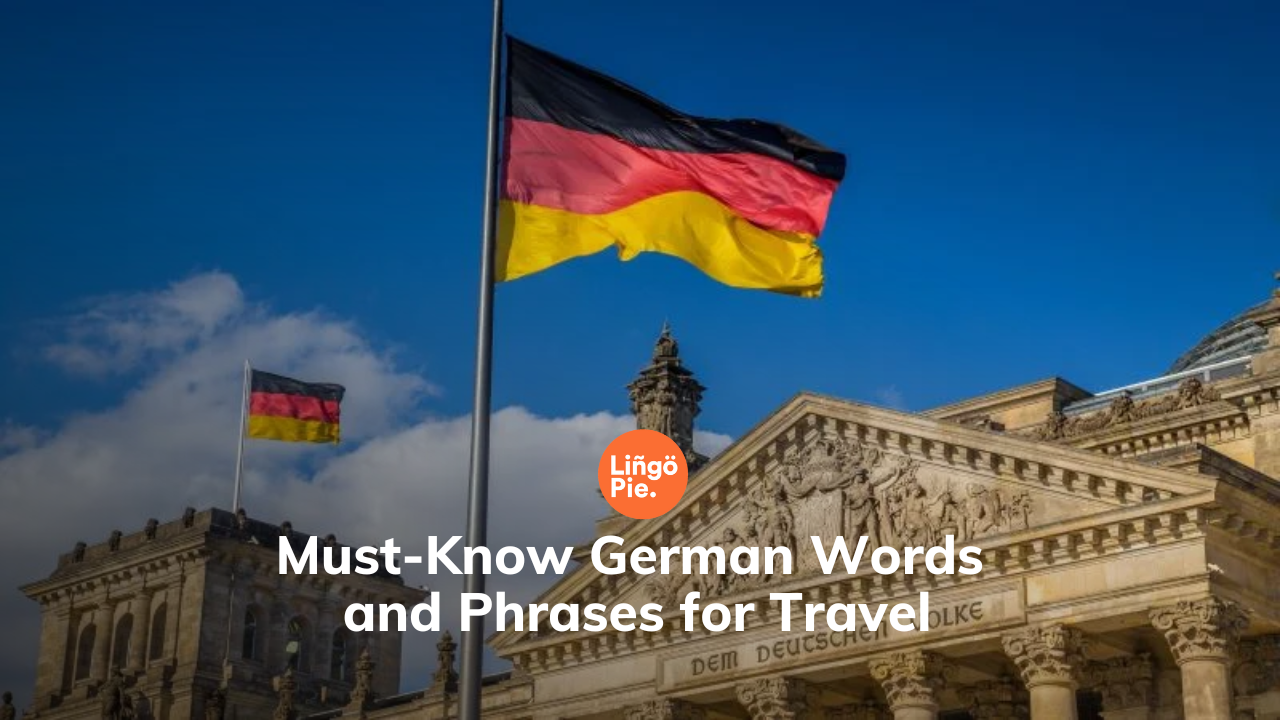
Getting Your Own Traditional German Clothing
If you're interested in purchasing your own traditional German clothing, here's where you can buy your own traditional German clothing.
- Traditional Trachten shops in Germany ("Trachtengeschäfte")
- Department stores in Germany with Tracht sections (e.g., Kaufhof, Karstadt)
- Specialized online retailers (e.g., Alpenclassics, Stockerpoint, Krüger Dirndl)
- Seasonal markets and festivals in Germany
Note: Prices can vary widely based on quality, brand, and materials.
Before making a purchase, especially online, be sure to read reviews and check the seller's reputation. If possible, try items on in person to ensure a good fit, as traditional clothing sizes may differ from standard clothing sizes.


Other German Words For Clothing
While learning about traditional German clothing is fascinating, it's equally important to know the terms for everyday clothing items. After all, you're more likely to shop for a t-shirt than a Dirndl on a typical day in Germany!
Let's explore some common German words for modern clothing and accessories. This vocabulary will come in handy whether you're shopping, describing what someone's wearing, or just chatting about fashion with your German friends.
| English | German |
|---|---|
| Shirt | das Hemd |
| T-shirt | das T-Shirt |
| Sweater | der Pullover |
| Jacket | die Jacke |
| Coat | der Mantel |
| Pants/Trousers | die Hose |
| Jeans | die Jeans |
| Skirt | der Rock |
| Dress | das Kleid |
| Shoes | die Schuhe |
| Socks | die Socken |
| Underwear | die Unterwäsche |
| Hat | der Hut |
| Scarf | der Schal |
| Gloves | die Handschuhe |
| Belt | der Gürtel |
| Tie | die Krawatte |
| Sunglasses | die Sonnenbrille |
| Watch | die Uhr |
| Jewelry | der Schmuck |
| Earrings | die Ohrringe |
| Necklace | die Halskette |
| Ring | der Ring |
| Bracelet | das Armband |
Remember, in German, all nouns are capitalized, and they have a gender (der, die, or das). Don't worry too much about memorizing the genders right away - it comes with practice!
Some useful phrases:
- "Ich suche eine neue Jacke." (I'm looking for a new jacket.)
- "Das Kleid steht dir gut!" (That dress looks good on you!)
- "Wo kann ich Schuhe kaufen?" (Where can I buy shoes?)
With this vocabulary, you'll be ready to talk about clothing in everyday German conversations. Happy shopping!
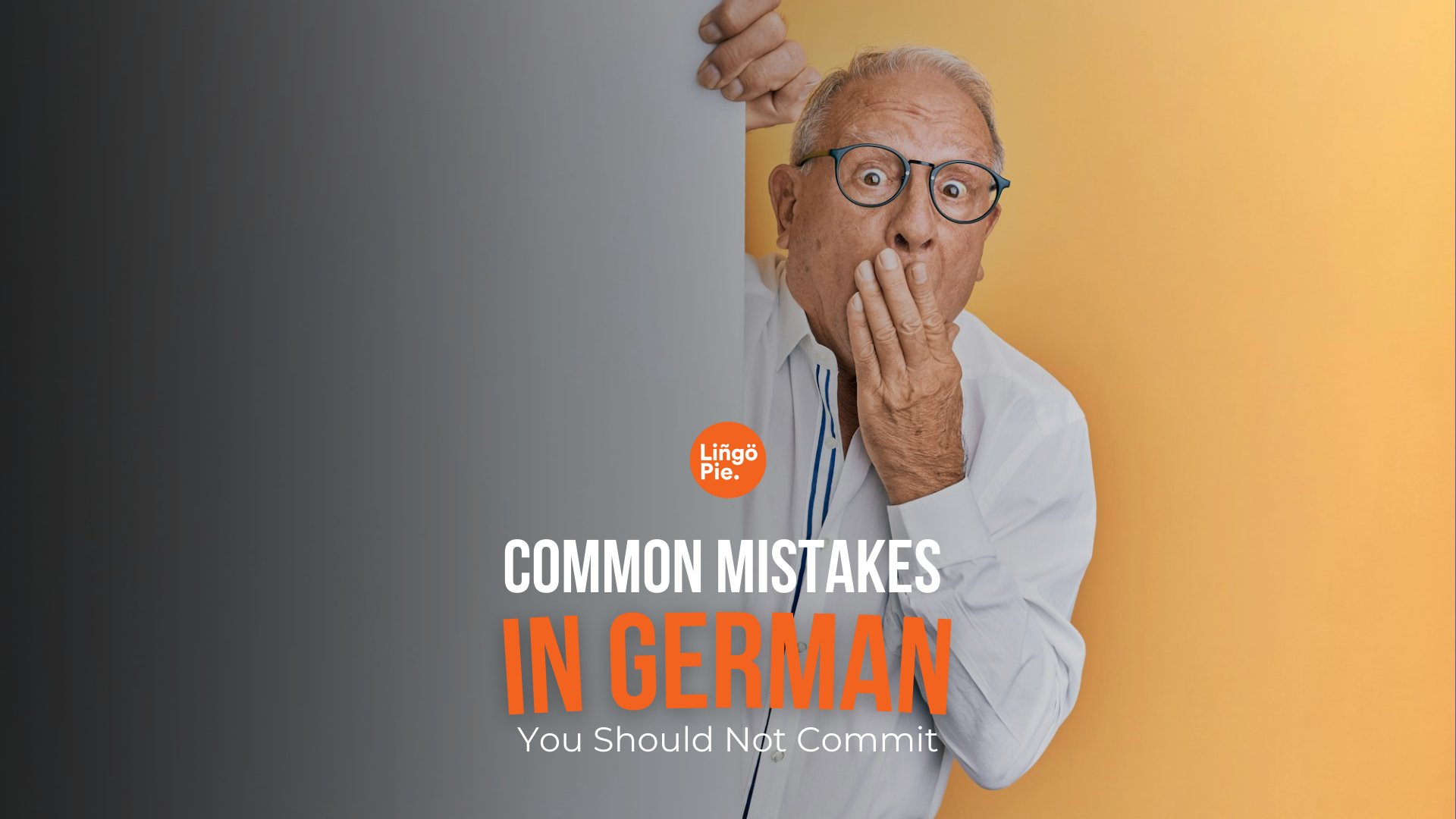
Learn German With Lingopie
If you're itching to see traditional German clothing (and other historic German outfits) in action and soak up more German language and culture, give Lingopie a shot! It's packed with German movies and TV shows that'll have you spotting Dirndls and picking up phrases even faster!
With Lingopie, you can:
- Immerse yourself in authentic German content
- Learn vocabulary in context (goodbye, boring flashcards!)
- Improve your listening skills with native speakers
- Pick up colloquial expressions you won't find in textbooks
- Adjust the playback speed if things get too schnell (fast)
So, ready to level up your German skills and cultural know-how? Hop over to Lingopie and start your binge-watching... er, we mean, learning journey today!
FAQs
What is traditional German clothing called?
Traditional German clothing is known as "Tracht" (plural: "Trachten"). This term encompasses not just clothing, but also traditional hairstyles, accessories, jewelry, and even symbols or insignia specific to different regions, professions, or social groups in Germany.
What is the traditional national dress of Germany?
Germany doesn't have a single national dress due to its historical division into many states and regions. However, the Dirndl (for women) and Lederhosen (for men) from Bavaria have become internationally recognized symbols of German traditional dress, especially due to their prominence at Oktoberfest.
Do Germans still wear traditional clothing?
While not common as everyday wear, traditional clothing is still worn for special occasions, festivals, and cultural events throughout Germany. Its use varies by region, with southern areas like Bavaria and Baden-Württemberg seeing more frequent use. Many Germans also wear modern interpretations of Trachten, blending traditional elements with contemporary fashion.
What does a Dirndl consist of and what's its history?
A Dirndl typically includes a bodice, blouse, full skirt, and apron. It originated in the 19th century as practical Alpine peasant wear but evolved into a fashion statement. The placement of the apron bow can indicate the wearer's relationship status: right for taken, left for single, center for virgin, and back for widowed or waitstaff.


